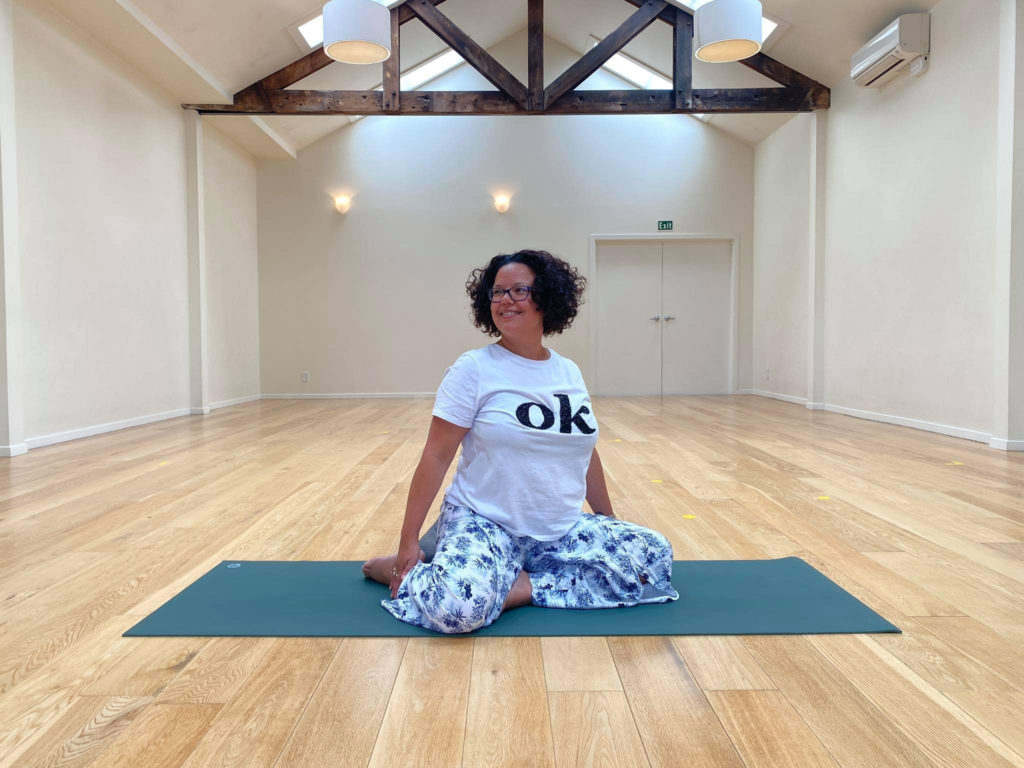
By Veronica King, The Yoga Nidra Project
As a tantric yogi I have always enjoyed saying yes to life, all of it!
For years I’ve had boundless energy to work, play, practice and party. All in equal measure. But over the last few years I noticed a significant shift, my tank that was always full, was not topping up and suddenly I had a completely empty tank.
I was depleted, exhausted, facing a health crisis. So I sat with the questions: what depletes me, and what nourishes me?
I began to see how even casual use of alcohol and cannabis left me feeling foggy, tired, craving, and how a festive night would take the whole next day in bed to recover. I noticed how I would turn to external solutions in an aversion to facing uncomfortable feelings and stressful events that would come up.
The temporary comfort and pleasure suddenly did not equal the price paid.
So began the commitment to use Yoga Nidra as the practice to return to wholeness, and ultimately it led me to choose sobriety to see what that reveals.
The Integrative Amrit Method of Yoga Nidra explains there are 6 Tools of Yoga Nidra, or functions of the practice.
The point of the practice is liberation, and the pathway consists of understanding the purpose of these tools, to maximise their efficacy. Each of these have helped me establish a clarity around exploring sobriety and put me back in charge of my body and my life.
“Using yoga nidra for a nap is like using a jet plane to drive to the grocery store” (Desai, p7) these tools will help you understand how you can fly.
Realization is the ultimate tool, Yoga Nidra allows us to experience the Self beyond the body and mind. We are not the events in our life, we are not our cravings, we experience the Self as the witness to all things.
“We simply rest as the space through which all experiences come and go.” (Desai, p6)
Part of my identity for so long was the party girl. This practice helped me recognise that was simply one aspect of my outer “ego” life, and not the totality of who I am. It was even ok to let her go. This is the teaching of Sutra 1.3: The seer abides in his own true nature.
Disidentification is the second tool and perhaps one of the most effective in creating changes in behaviour. We create distance between thought and behaviour. We shine the light of awareness on our habits. The more conscious and aware we can become of what was “autopilot”, the more we are in control of our choices.
We learn how to see the old tendencies. Watch out for sneaky “swaps”, over the years I noticed whenever I set the intention to not drink it would be replaced with smoking and vice versa. At the start of this journey I noticed I suddenly swapped substances for “retail therapy” – something I literally had not done as a comfort since I was a teenager.
Integration of unprocessed experiences is the next tool. We release the intensity of the sensations we are trying to avoid, through our practice. A clearing out can take place, through our breath practices, through our connection to the energy body and visualisation. Ever felt lighter and clearer after Yoga Nidra? Integration works on the physiological and mental layers of our being.
Restoration is perhaps the most visceral and obvious tool of a Yoga Nidra. Our body and mind have full permission to rest. We return to a state of being rather than doing. For most people the relationship with substances starts as a stress reliever. My practice showed me how to manage stress by resting and allowing myself time for stillness and recovery.
The most essential tool and transformational component of Yoga Nidra for me is Intention.
It is the conscious use of attention to steer our life in the direction we want to go, rather than be steered by habit and circumstances. I started with the intention “I make choices that nourish myself” because I wanted to increase the amount of water I was drinking, but this became the guiding intention for my whole life. This intention informed all facets of my life: relationships, diet, lifestyle, workloads, everything came back to this intention.
Unlike a specific goal (e.g. I will drink 2 litres of water a day) it allowed me to be present in all my decision making and became an overarching principle so I could live my life in alignment. So the yogi was not at war with the party girl, and the wife was not competing with the business owner. One unified intention made all the parts of my life feel connected and influential towards the one united expression of the highest version of myself.
Finally, what we can perhaps call the 6th tool, is that Yoga Nidra is a practice of surrender to a higher power, a spiritual practice. We recognise that control and will can only get us so far, and that ultimately life requires surrender and faith.
Yoga Nidra deepened my faith and connection to something much greater than me (insert whatever language is meaningful to you here: Source, Siva, Universe, God, Mother Nature). This is the 11th step in the AA program, prayer and meditation exploring the spiritual path and surrender to a higher power.
Psychological literature regarding preventing relapse also encourages spiritual practice: “As a multidimensional concept spirituality involves a personal search for meaning and fulfillment in life, offering inner harmony and interconnectedness at all levels of existence. Spirituality can also be defined as a healthy relationship with all things and people who are valued. By helping the client improve his or her relationships, spirituality becomes a primary agent for change” (Marlatt and Donovan, p171) .
This to me is the exquisite beauty of the Amrit Script and Methodology, it speaks directly to my soul in a way that other teachings did not.
If you are listening to the longings of your soul, if you wish to change your relationship with any substance or behaviour that feels out of control, a consistent Yoga Nidra practice can transform your life, gently, lovingly and deeply. Find the teachings that are meaningful to you, that resonate and that you simply want to do more of. They will take you on the path to wholeness and empowerment.
References:
Desai, K. (2017). Yoga Nidra: The art of transformational sleep.
Marlatt, A.G & Donovan, D. M (2005). The Relapse Prevention: Maintenance strategies in the treatment of addictive behaviors.

Veronica King is a certified facilitator of the Integrative Amrit Method of Yoga Nidra. Grateful to the following Yoga Nidra teachers that have shaped her, Marc Holzman, John Vossler and Kamini Desai Phd. Follow her work on instagram: @theyoganidraproject


Useful post Thanks for sharing it that’s truly valuable knowledge about similar topic. Amazing. Have a more successful day. Amazing write-up always finds something interesting.